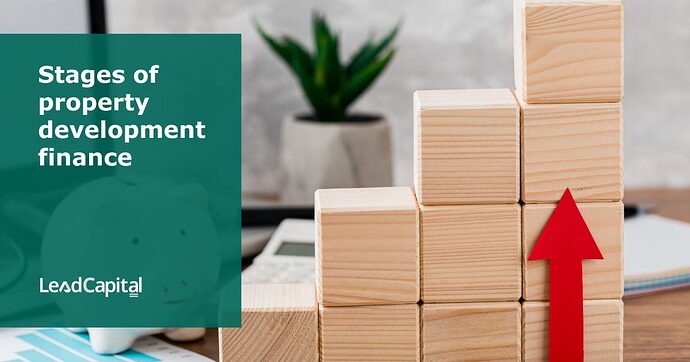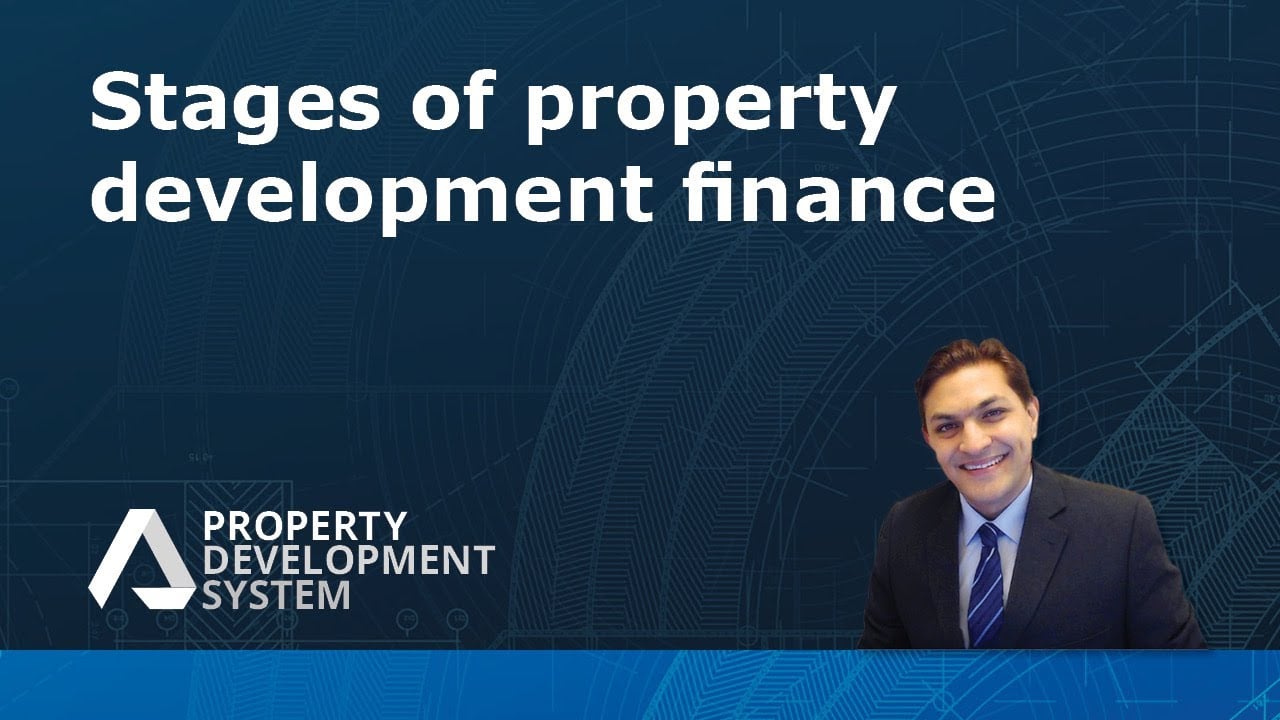Stages of Development Finance
The journey of real estate development involves multiple phases, each with unique financial challenges and opportunities. One pivotal moment in this journey is the transition from construction to long-term holding of properties.
This phase often involves refinancing, which can significantly influence a developer’s long-term investment strategy. Understanding the nuances of refinancing after construction is crucial for developers looking to maximise their investment returns and ensure financial stability.
Pre-pre-stage
Requires private funding or seed capital. This initial capital is crucial for developing and might include personal investments or loans from friends and family.
Land acquisition loan
A loan for purchasing land, often a residential loan, is necessary. Lenders may require mortgage insurance (LMI) if borrowing over 80% of the loan-to-value ratio.
Construction finance
Once planning permits are in place, the project moves to construction financing. This commercial loan is packaged with capitalised interest, meaning no monthly instalments are necessary during construction.
Refinancing for long-term holding
After construction, if the developer decides to hold some units as long-term investments, they can refinance these properties into a residential loan to pay off construction loans and potentially incorporate profits.
Benefits of Refinancing After Construction:
Debt Consolidation
Refinancing consolidates any remaining construction debt into a single, more manageable loan, often with better terms and rates.
Lower Interest Rates
Transitioning from a construction loan to a long-term residential loan can secure lower interest rates, reducing borrowing costs.
Improved Loan Terms
Refinancing can provide more favourable loan terms, such as extended repayment periods, enhancing cash flow and financial stability.
Leveraging Equity
If the property has appreciated in value, developers can leverage this equity to negotiate better-refinancing terms or secure additional funds for future projects.
Risk Mitigation
By moving to a stable, long-term loan, developers reduce their exposure to the risks associated with construction loans, such as variable interest rates.
Insights based on numbers:
- The Loan to Value Ratio (LVR) can range from 60% to 95%, with Lenders Mortgage Insurance (LMI) required above 80% LVR.
- Construction loans have a capitalized period ranging from 9 to 36 months, often at a higher interest rate than other loans.
Frequently Asked Questions
How does the loan-to-value ratio affect the requirement for lenders mortgage insurance during land acquisition?
The LVR is a measure of the loan amount compared to the value of the property being purchased, expressed as a percentage.
LVR Range
The LVR for land acquisition loans can vary significantly, typically from 60% to 95%. This range indicates the portion of the property’s value that the lender is willing to finance.
Impact of LVR on LMI
Lenders Mortgage Insurance (LMI) becomes required when borrowing more than 80% of the property’s value (i.e., an LVR above 80%). LMI is an insurance policy that protects the lender in case the borrower defaults on the loan. It’s important to note that the borrower, not the lender, bears the cost of LMI.
Implications
Borrowing with a high LVR (above 80%) increases the financial risk to the lender, which is why LMI is required. For the borrower, this means an additional cost on top of the loan, increasing the overall expense of acquiring land. However, it also allows for greater leverage, enabling developers to pursue projects with a smaller upfront capital requirement.
How can refinancing after construction benefit the developer’s long-term investment strategy?
Refinancing after construction offers several benefits for a developer’s long-term investment strateg:
Debt Consolidation
Refinancing allows developers to consolidate any remaining construction debt into a single, long-term loan. This is particularly advantageous if the developer intends to hold onto specific properties as long-term investments.
Lower Interest Rates
Typically, long-term residential loans have lower interest rates compared to construction loans. By refinancing, a developer can reduce the borrowing cost, enhancing the retained properties’ profitability.
Improved Loan Terms
Beyond securing lower interest rates, refinancing can also offer more favorable loan terms, such as longer repayment periods. This can improve the developer’s cash flow and financial stability.
Leveraging Equity
If the development has increased in value upon completion (e.g., due to high demand for the units or strategic improvements made), the developer can leverage this equity to negotiate better refinancing terms. This might include borrowing additional funds for future projects or further investments at competitive rates.
Risk Mitigation
Refinancing into a stable, long-term loan reduces exposure to variable interest rates and other financing risks associated with construction loans. This stability is crucial for developers planning to hold properties as part of their investment portfolio.
What is Development Finance in Real Estate?
Development finance in real estate refers to the various types of funding used throughout the lifecycle of a real estate project. This financing supports different stages, including the initial purchase of land, the construction phase, and the long-term holding of properties. It’s tailored to address the specific financial needs and challenges encountered at each stage.
What is the Significance of Refinancing in Real Estate Development?
Refinancing plays a crucial role in transitioning from construction to long-term holding of properties. It allows developers to replace their initial construction loans with more favorable long-term financing. This shift is vital for maximizing investment returns, improving cash flow, consolidating debt, and achieving financial stability.
What are the Initial Funding Sources for Real Estate Development?
Initial funding, often referred to as seed capital, is essential for kick-starting a real estate development project. This capital might come from personal investments, or loans from friends and family. It provides the necessary financial support for the early stages, including concept development and securing planning permits.
How Do Developers Finance the Purchase of Land?
Developers typically use a land acquisition loan to finance the purchase of land. This is often a specific type of residential loan. If the loan-to-value ratio (LVR) exceeds 80%, lenders may require Lenders Mortgage Insurance (LMI) to mitigate the risk of the loan.
What is Construction Finance?
Construction finance is a commercial loan designed to cover the costs of constructing a real estate project. It features capitalised interest, which means that the developer does not have to make monthly payments during the construction phase. This financial arrangement is crucial for managing cash flow during construction.
How Does Refinancing Work After Construction?
Once construction is completed, developers may choose to refinance the properties they intend to hold long-term. Refinancing involves securing a residential loan to pay off the original construction loans and potentially incorporate profits. This step is essential for consolidating debts and securing better loan terms for the future.
What are the Benefits of Refinancing After Construction?
Refinancing after construction offers several advantages:
- Debt Consolidation: It consolidates construction debts into a single loan with potentially better terms.
- Lower Interest Rates: Developers can often secure lower interest rates compared to construction loans, reducing borrowing costs.
- Improved Loan Terms: Refinancing can result in extended repayment periods and other favorable conditions.
- Leveraging Equity: If the property’s value has increased, developers can leverage this equity for better refinancing terms or to fund future projects.
- Risk Mitigation: Transitioning to a stable, long-term loan reduces exposure to the risks associated with construction loans, like variable interest rates.
What Are the Typical Loan to Value Ratios (LVR) in Development Finance?
The LVR in development finance can range from 60% to 95%. Loans that exceed an 80% LVR typically require Lenders Mortgage Insurance (LMI) to protect the lender against the risk of default.
What is the Capitalized Period in Construction Loans?
The capitalized period in construction loans is the timeframe during which interest accumulates but is not required to be paid. This period can range from 9 to 36 months, allowing developers to focus on construction without the financial pressure of monthly interest payments. These loans often carry higher interest rates than other types of loans.
Test Your Knowledge
Multiple-Choice Questions on Stages of Development Finance
1. What is the purpose of seed capital in the pre-pre-stage of real estate development?
A) To cover the costs of land acquisition
B) To finance the construction phase
C) To provide initial funding for concept development and planning permits
D) To refinance existing loans
2. When is Lenders Mortgage Insurance (LMI) typically required during the land acquisition stage?
A) When the loan-to-value ratio (LVR) is below 60%
B) When borrowing over 80% of the loan-to-value ratio
C) For all land acquisition loans regardless of LVR
D) Only when purchasing commercial properties
3. Which of the following best describes construction finance?
A) A personal loan used for buying construction materials
B) A commercial loan with capitalized interest requiring no monthly payments during construction
C) A short-term loan with high monthly payments to speed up construction
D) A grant from the government to support residential projects
4. What are the key benefits of refinancing after construction? (Select all that apply.)
A) Increases the interest rate to cover new construction risks
B) Consolidates any remaining construction debt into a single loan
C) Provides an opportunity to leverage equity for better terms
D) Extends the repayment period to enhance cash flow
5. How does the loan-to-value ratio (LVR) affect refinancing options after construction?
A) Lower LVR always results in higher interest rates
B) An LVR above 80% may require additional insurance policies
C) High LVR limits the ability to refinance
D) Properties with an LVR between 60% to 95% offer the best refinancing terms
6. What does the capitalized period in a construction loan refer to?
A) The time when the construction must be completed
B) A phase during which interest accumulates but does not require payment
C) The initial phase where capital is raised for the project
D) The final stage of loan repayment
Answers:
- C) To provide initial funding for concept development and planning permits
- B) When borrowing over 80% of the loan-to-value ratio
- B) A commercial loan with capitalized interest requiring no monthly payments during construction
- B) Consolidates any remaining construction debt into a single loan, and D) Extends the repayment period to enhance cash flow
- B) An LVR above 80% may require additional insurance policies
- B) A phase during which interest accumulates but does not require payment.
Assignment
Practical Exercise on Understanding Stages of Development Finance
This exercise is designed to deepen your understanding of the financial stages in real estate development, focusing on the transition from construction to long-term holding and the nuances of refinancing post-construction.
Questions & Tasks
Seed Capital Exploration:
Research and identify at least three sources of seed capital available to real estate developers. Describe the advantages and disadvantages of each source.
Land Acquisition Financing:
Calculate the Loan to Value Ratio (LVR) for a piece of land valued at $500,000, where the developer wishes to borrow $400,000. Would Lenders Mortgage Insurance (LMI) be required in this scenario? Explain your reasoning.
Understanding Construction Finance:
Create a hypothetical construction finance scenario including the loan amount, capitalized interest rate, and the capitalized period. Explain how the capitalized interest benefits the developer during the construction phase.
Refinancing Scenario Analysis:
- Develop a case study where a developer needs to refinance after construction. Include:
- The original loan amount and interest rate.
- The estimated value of the development post-construction.
- The desired refinancing loan amount and the potential benefits (e.g., lower interest rate, debt consolidation).
- Analyze how refinancing impacts the developer’s long-term investment strategy.
Equity Leveraging Exercise:
Assuming a property originally financed through construction finance appreciated by 25% upon project completion, calculate the new equity available. How might this equity be leveraged in refinancing?
Risk Mitigation Discussion:
Compare and contrast the risks associated with construction loans versus long-term residential loans. Discuss how refinancing helps mitigate these risks.
Research Questions
Current Trends in Development Finance:
Research the current trends in development finance, focusing on seed capital, land acquisition loans, and refinancing options. How have these trends evolved in the last decade?
Real-World Refinancing Examples:
Find and summarize a real-world example of a real estate development project that went through the refinancing process after construction. What were the outcomes?
Lenders Mortgage Insurance (LMI) Impact:
Investigate the impact of Lenders Mortgage Insurance (LMI) on real estate development financing. What are the typical costs, and how do they affect the overall financing strategy?
To Do’s
Interview with a Developer:
Arrange an interview with a real estate developer. Prepare questions that cover the journey from seed capital to refinancing post-construction. Share your findings and insights.
Financial Model Creation:
Using a spreadsheet, create a financial model for a small real estate development project from land acquisition through to refinancing post-construction. Include all relevant financial metrics and assumptions.



